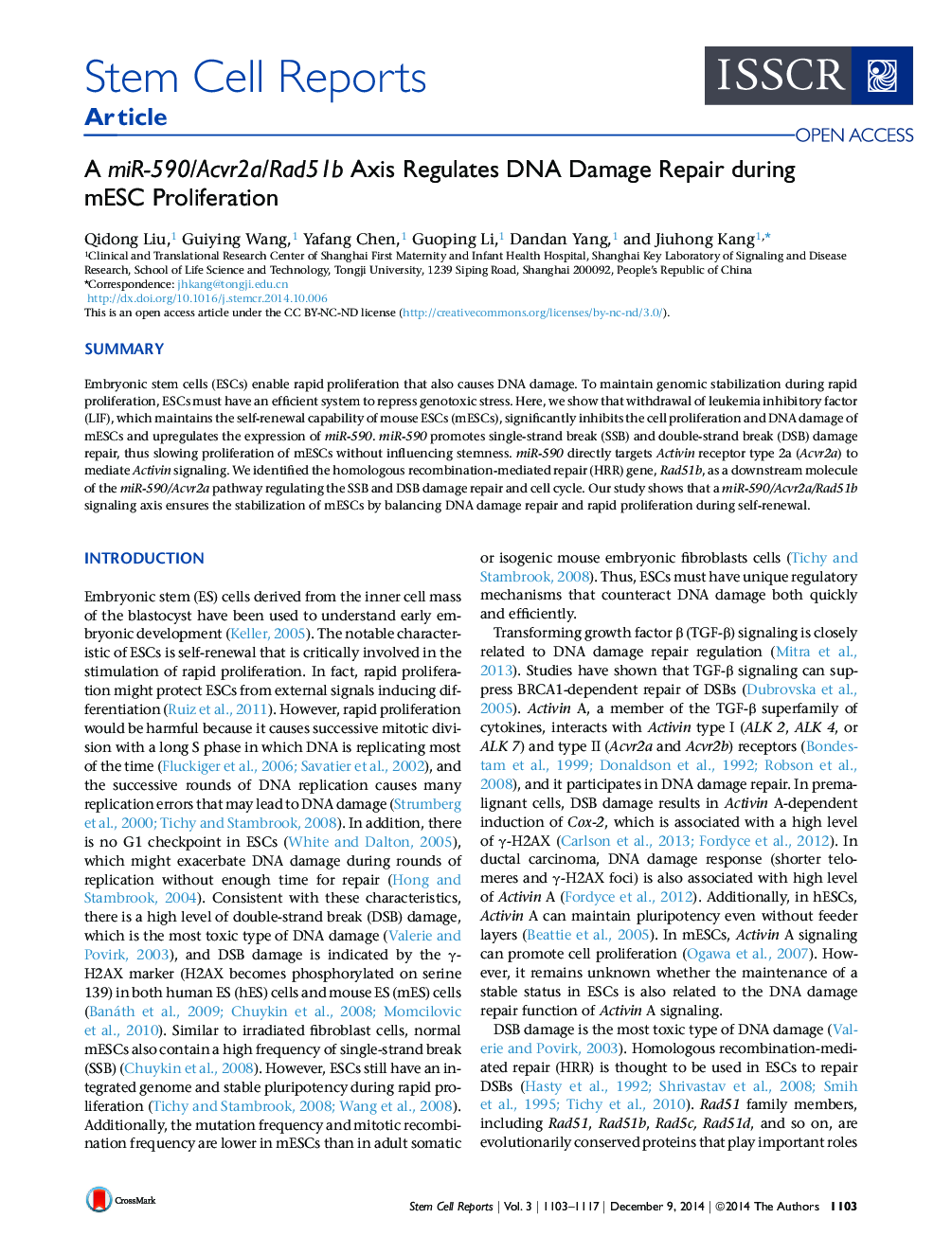| Article ID | Journal | Published Year | Pages | File Type |
|---|---|---|---|---|
| 2093687 | Stem Cell Reports | 2014 | 15 Pages |
•miR-590 promotes DNA damage repair and slows proliferation by targeting Acvr2a•miR-590/Acvr2a/Rad51b axis balances SSB and DSB damage repair in mESCs
SummaryEmbryonic stem cells (ESCs) enable rapid proliferation that also causes DNA damage. To maintain genomic stabilization during rapid proliferation, ESCs must have an efficient system to repress genotoxic stress. Here, we show that withdrawal of leukemia inhibitory factor (LIF), which maintains the self-renewal capability of mouse ESCs (mESCs), significantly inhibits the cell proliferation and DNA damage of mESCs and upregulates the expression of miR-590. miR-590 promotes single-strand break (SSB) and double-strand break (DSB) damage repair, thus slowing proliferation of mESCs without influencing stemness. miR-590 directly targets Activin receptor type 2a (Acvr2a) to mediate Activin signaling. We identified the homologous recombination-mediated repair (HRR) gene, Rad51b, as a downstream molecule of the miR-590/Acvr2a pathway regulating the SSB and DSB damage repair and cell cycle. Our study shows that a miR-590/Acvr2a/Rad51b signaling axis ensures the stabilization of mESCs by balancing DNA damage repair and rapid proliferation during self-renewal.
